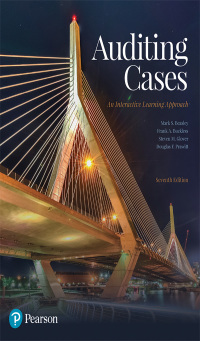Banking regulators announced in early 2015 a greater focus on evaluating ethical culture as part of their
Question:
Banking regulators announced in early 2015 a greater focus on evaluating ethical culture as part of their regulatory examination of a bank’s health. In a February 2015 speech, Thomas Baxter, Executive Vice President and General Counsel at the Federal Reserve Bank of New York, announced that the Federal Reserve was making ethical culture a priority for financial services in its efforts to prevent the bad behavior among some in the financial services industry preceding the financial crisis that emerged in 2007-2008.1 While acknowledging that organizations with the strongest ethical culture may have periodic episodes of bad behavior, Baxter argued that strengthening ethical culture of financial services institutions ought to lower the extent of bad behavior previously observed.
Soon after this speech, a February 1, 2015 article in The Wall Street Journal described challenges large banks might have in measuring a bank’s culture, which might extend from the teller serving customers in a single branch to the senior executive C-suite.2 In particular, the article featured how Wells Fargo was surveying employees annually to measure their satisfaction, which the bank’s CEO, John Stumpf, referred to as the “happy to grumpy ratio.” This was based on the bank’s theory that happier employees are more likely to make ethical decisions. The Wall Street Journal article went on to highlight how the ratio of satisfied to not-satisfied employees improved for Wells Fargo from 3.8:1 in 2010 to 8:1 in 2014.
REQUIRED
[1] Describe the impact of this event on Wells Fargo’s financial statements; specifically how the alleged inappropriate sales practices would have affected Wells Fargo performance and financial position in the 2011 through 2014 time period. Identify where the $185 million in fines was reflected in Wells Fargo’s 2016 financial statements.
[2] Visit the website of the U.S. Securities and Exchange Commission (www.sec.gov) and locate the Form 10-K filed on February 25, 2015 by Wells Fargo & Company/MN (CIK#: 0000072971) for the 2014 fiscal year. Based on that financial information filed with the SEC just prior to the first public announcement of the alleged sales improprieties, assess the following:
[a] Would the cumulative effect of the inappropriate recording of customer fees be considered material to the Wells Fargo financial statements for 2014?
[b] Would the $185 million fines be considered material to the Wells Fargo financial statements?
[3] Because Wells Fargo is a publicly traded company, KPMG would have performed the audit of the financial statements and internal control over financial reporting using PCAOB Auditing Standards. Research those standards (visit www.pcaobus.org) to answer the following questions:
[a] What is the auditor’s responsibility to detect fraud?
[b] What is the auditor’s responsibility to detect an illegal act?
[4] In their letter to the KPMG CEO, the four Senators refer to the sales practices as representing a “massive fraud.” Discuss whether or not you agree with their claim.
[5] How would knowledge of the alleged sales practices shed insights about the effectiveness of internal controls over financial reporting?
[6] Would the alleged sales practices be considered a significant deficiency or material weakness in internal control over financial reporting? [7] KPMG issued an audit opinion stating that Wells Fargo’s internal controls over financial reporting were operating effectively as of December 31, 2014. Had KPMG known about the alleged sales practices before they issued their audit opinion on internal control over financial reporting for the 2014 fiscal period, how might that knowledge impact their audit opinion?
[8] Because the letter from the four Senators is a public document accessible under the Freedom of Information Act, the response from KPMG would need to be carefully crafted. If you were in Lynne Doughtie’s position, would you respond to the letter from the Senators? If so, what would be some of the challenges in crafting your response?
[9] How might information about the $185 million settlement with the CFPB, City of Los Angeles, and the OCC trigger additional issues for the bank? What implications might that have for the 2016 and beyond financial statements for Wells Fargo?
Step by Step Answer:

Auditing Cases An Interactive Learning Approach
ISBN: 9780134421827
7th Edition
Authors: Mark S Beasley, Frank A. Buckless, Steven M. Glover, Douglas F Prawitt





